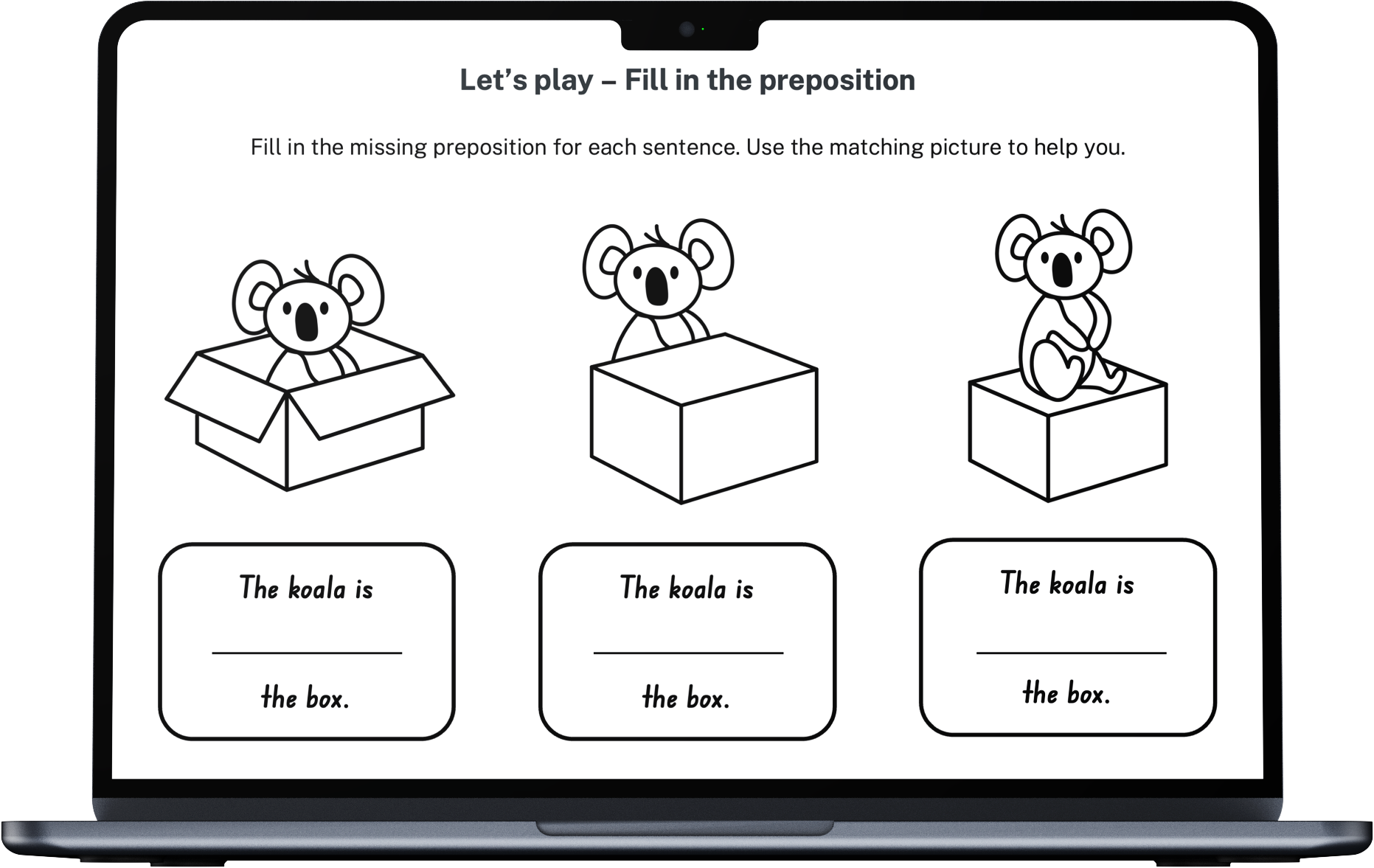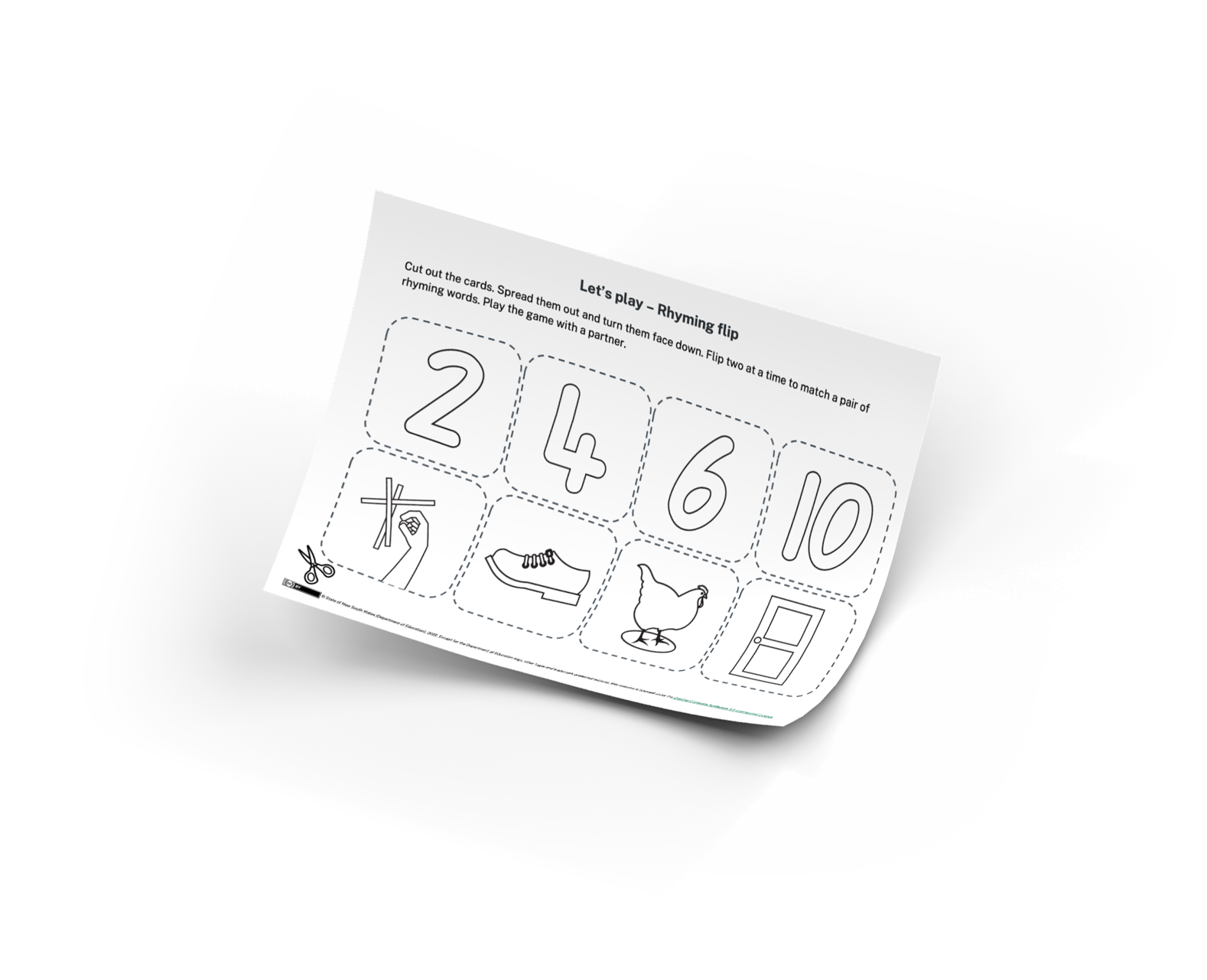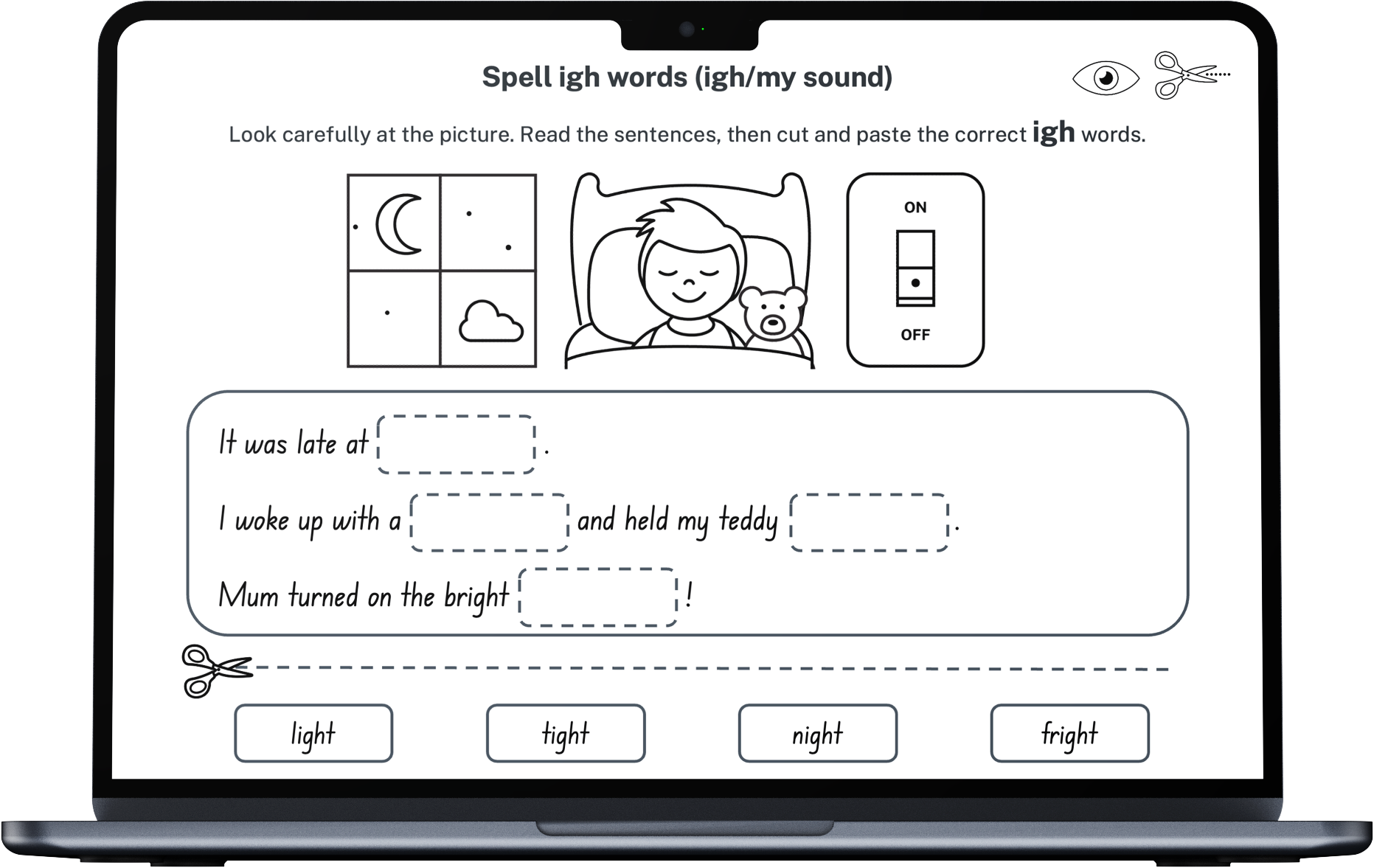
This image is a generative visual created to represent a learning environment and context of an online lesson resource.
NSW Department of Education – Student Learning Library.
In 2022, the NSW Department of Education initiated the development of online English interactive resources to support new education programs for K–2. The project aimed to provide teachers and students with curriculum-aligned animated explainers, games, visual learning tools, and parent/carer guidance —that could be accessed remotely and integrated into classroom learning, hosted on URH and used by thousands of teachers digital resources. This was a large-scale project with a strong emphasis on clarity, accessibility, and instructional integrity.
Contracted by Kimberlin Education, I was engaged as Creative Lead to guide the design direction and visual consistency across all educational materials produced during the project’s first rollout phase.
Being entrusted as creative lead on a project of this scale was both a professional milestone.
The project was a cross-disciplinary collaboration between NSW Department of Education Teaching and Learning Advisors, Kimberlin Education, and a contracted creative team that included educators, graphic designers, and videographers. Each specialist contributed expertise to ensure the resources met curriculum standards, educational outcomes, and accessibility requirements. The project involved close collaboration with government departments, engaging multiple stakeholders, and team management to ensure consistent, high-quality outcomes.

This image is a generative visual created to represent a learning environment and context of an online lesson resource.
As Creative Lead, I was responsible for setting up the visual framework and managing the end-to-end creative output for the project. This included:
Leading a team of graphic designers and videographers
Establishing processes and procedures for consistent production and delivery
Designing and implementing the visual identity and templates for all resource types
Managing timelines, output file handling, and stakeholder reviews
Providing creative direction and quality assurance across all visual content
Liaising directly with Kimberlin Education and Department advisors to ensure adherence to curriculum goals and delivery deadlines
Participating in stakeholder meetings to align on visual strategy and content development
Contributing hands-on design work throughout the project, from concept to implementation
Delivering a statewide digital literacy resource for K–2 came with significant ambition and complexity. With no pre-existing templates or systems to draw on, the project required the team to build foundational creative and operational structures from the ground up—all while actively producing content.
Working entirely remotely, we navigated the challenge of achieving consistency across disciplines and platforms. Educators drafted lesson content while receiving ongoing feedback from the Department, resulting in frequent revisions and a highly dynamic workflow. This iterative content development created pressure on the design timeline, requiring the team to adapt quickly and maintain clarity through versioning and templating systems.
The visual language was developed progressively as content emerged. While the Department had comprehensive formal and print guidelines, the digital guidelines available at the time were designed for formal, administrative content—posing challenges when adapting them for engaging, child-facing learning materials. We shaped the visual direction collaboratively in real time—striking a balance between creativity, accessibility, curriculum alignment, and adherence to the Department’s strict brand expectations.
A hybrid production process—combining Google tools with Microsoft-based design workflows—introduced occasional compatibility issues, which we resolved through adaptable formatting practices. Meanwhile, video content creation from distributed home environments required additional support to maintain production quality across varying technical setups.
Despite the challenges, the project was underpinned by a strong sense of purpose and shared dedication. Together, we created a foundational visual and content system that supported the Department’s first digital rollout of this kind—an achievement that reflected the strength of collaboration, responsiveness, and creative clarity under pressure.
The digital resource suite was structured across learning Sequences, progressing from Kindergarten to Year 2. Within each Sequence were Units of Work, and within each Unit, a set of approximately 10 structured lesson plans.
Each lesson included a combination of the following:
Formatted lesson documents for educator use
Blackline master resources, delivered in both PDF and Google Slides formats
Instructional videos recorded by educator-presenters and edited/produced by videographers, including standardised intro and outro sequences
Audio recordings to support multimodal delivery
Interactive online activities for student engagement, built from scratch to align with curriculum goals and visual consistency
Each lesson plan was part of a tightly integrated content ecosystem, with consistent assets designed to maintain structure and support educational outcomes.
In addition to the lessons themselves I lead the creative for:
-
To guide consistent formatting and structure.
-
To support variation in printable and digital delivery.
-
Including standardised intro and outro sequences for brand alignment.
-
For ease of creation and consistent styling of activities.
-
To provide structure and clarity for each block of content.
-
Developed in parallel with lesson development, primarily created in-house by the creative team. While the Department provided a limited pool of approved government assets, strict requirements around attribution and Creative Commons licensing limited their applicability. The visual library was carefully developed to adhere to the Department’s brand guidelines while ensuring consistency, appropriateness for student audiences, and ease of integration into the wider content ecosystem.
-
Applied across all deliverables—excluding interactive files—to meet government digital accessibility requirements.
-
To support version control and collaborative handover across teams and stakeholders; files were stored in a shared cloud environment and accessed directly by Department technology staff for final migration to internal servers.
-
Covering look and feel, branding, creative process, licensing attribution, illustration direction, template preparation, and file management naming conventions for all content types to ensure brand consistency, scalability, and accessibility.
The Phase 1 delivery of the NSW Department of Education's digital literacy project established the creative and operational groundwork for what would become a multi-phase statewide curriculum initiative. As the first iteration of its kind, this foundational work shaped the structure, visual identity, and production approach that informed and enabled subsequent project phases.
Hundreds of lesson resources were created—spanning sequences, units, and lesson plans from Kindergarten to Year 2. These materials were developed to support use across all NSW public schools and were formatted for distribution via the Department’s internal platforms, ensuring accessibility at scale.
The design systems, templates, illustration style, and accessibility standards developed during this initial phase provided a consistent, scalable framework for delivering high-quality, curriculum-aligned content. While the project continued to evolve in later phases, the early work provided a critical springboard—defining the creative intent and setting expectations for clarity, consistency, and digital accessibility.
'As a lead Creative Director and Graphic Designer, Tiana has consistently delivered exceptional design solutions and strategic creative direction, highest level of visual communication skill, stakeholder engagement, and attention to detail. Her professionalism, creativity, and reliability, Tiana has been an indispensable part of our team.’
Naomi Lindermeyer, Education and Company Director,
KIMBERLIN EDUCATION
Personal
reflection
This was my first major role after maternity leave, and it marked a significant personal and professional leap. With a toddler at home and my eldest in early primary school, stepping into a full-time, high-responsibility position felt both daunting and exhilarating. The pace and scale of the project called for deep focus and dedication—often stretching well beyond standard hours—and in doing so, it reignited my confidence and reminded me of the depth of my creative and strategic ability.
I remember joining early leadership meetings, managing the creative team, and hoping I sounded as sure as I was determined to be. What emerged, over time, was a deep sense of ownership and flow in managing workflow, creative standards, and team support. I found rhythm in the responsibility and quickly rediscovered my confidence in directing workflow, upholding creative standards, and supporting a fast-paced delivery schedule.
A memorable moment: a superstorm swept through my suburb in the first weeks of the project, knocking out power and internet. With deadlines looming and a remote team depending on me, I ran the project off battery packs and mobile hotspots—a vivid snapshot of the resourcefulness this project required.
This role was more than just a return to work. It was a reawakening of my creative leadership and a reminder that I can meet complexity with clarity, even when juggling the most personal of responsibilities alongside the most professional.





